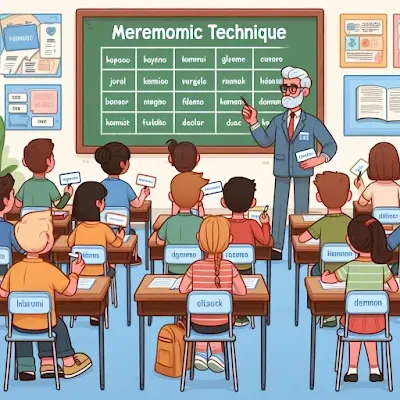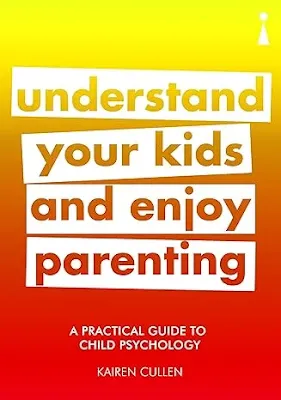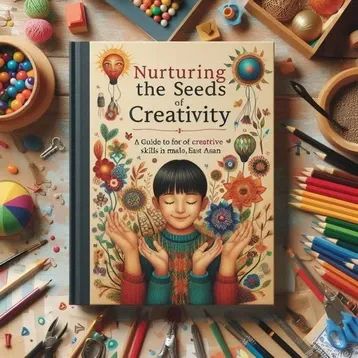Table of Contents:
4. Provide a Variety of Materials:
5. Foster a Positive Environment:
6. Integrate Creativity into Learning:
7. Support Divergent Thinking:
11. Celebrate Mistakes and Failure:
12. Understand Your Kids
and Enjoy Parenting:
1.
Introduction:
Children are our future and as
parents, it's our responsibility to provide them with the best learning
environment. In a rapidly evolving world, creativity has become a crucial skill
for success. As parents and educators, fostering creativity in children is a
responsibility that goes beyond the conventional realms of academics. The
ability to think creatively not only enhances problem-solving skills but also
equips children with the tools they need to navigate an unpredictable future.
In this blog post, we will explore effective ways to cultivate and develop
creative skills in children.
2. Encourage Curiosity:
Curiosity is the driving force
behind creativity. Encourage children to ask questions, explore their
surroundings, and seek answers. Foster an environment where curiosity is not
only welcomed but celebrated. Provide them with opportunities to learn beyond
the classroom, whether through visits to museums, nature walks, or hands-on
experiments. The more curious a child is, the more likely they are to develop
creative thinking skills.
3. Embrace Unstructured Play:
Unstructured playtime is a
cornerstone for fostering creativity in children. Unlike structured activities,
unstructured play allows children to use their imagination freely. Whether it's
building forts with blankets, creating imaginary worlds with action figures, or
engaging in role-playing games, unstructured play nurtures creativity by giving
children the freedom to explore and experiment without strict guidelines.
4. Provide a Variety of Materials:
Creativity often flourishes when
children have access to a diverse range of materials for arts and crafts. Offer
a variety of tools such as colored pencils, markers, paints, clay, and
recyclable materials. Having an array of materials allows children to express
themselves in different ways, fostering creativity and innovation. Remember,
it's not about the end product, but the process of creation that matters most.
My daughter once made a turbine project for her class projects competition and
it was well appreciated.
5. Foster a Positive Environment:
Creating a positive and supportive
environment is essential for nurturing creativity in children. Encourage
risk-taking and praise effort rather than focusing solely on results. When
children feel safe to express their ideas without fear of judgment, they are
more likely to think outside the box and take creative leaps. Internal issues
of parents may be discussed separately not in front of children.
6. Integrate Creativity into Learning:
Incorporating creativity into the
learning process helps children understand that creativity is not confined to
the arts alone. Infuse creativity into subjects like math, science, and
language arts. Encourage them to find creative solutions to problems, write
imaginative stories, or explore the artistic side of mathematical concepts. By
making creativity an integral part of learning, children will naturally develop
creative thinking skills. My daughter did a beginner's Chinese language course
for one week.
7. Support Divergent Thinking:
Divergent thinking is the ability to
generate a variety of ideas in response to a prompt or problem. Encourage
children to brainstorm and explore multiple solutions to a given challenge.
Avoid immediately dismissing ideas and instead guide them to consider different
perspectives. Fostering divergent thinking helps children become more
open-minded and adaptable, essential traits for creativity.
8. Model Creativity:
Children often learn by example.
Demonstrate your creativity by engaging in creative activities, whether it's
cooking, gardening, writing, or solving problems in unique ways. When children
see adults embracing creativity, they are more likely to view it as a valuable
and natural part of life.
 |
| AI-Generated classroom |
9. Cultivate a Reading Habit:
Reading opens up a world of
imagination and stimulates creative thinking. Introduce children to a variety
of books that spark their curiosity and ignite their imaginations. Encourage
discussions about the stories, characters, and settings. Reading not only
enhances language skills but also broadens a child's perspective, laying the
foundation for creative thinking. Amazon Kindle is
a great learning app for kids. Mnemonics technique and
Feynman technique of learning are very
important.
10. Provide Autonomy:
Granting children autonomy in their activities
fosters independence and creativity. Allow them to make choices about what they
want to create, how they want to do it, and the materials they wish to use.
This autonomy empowers children to take ownership of their creative endeavors
and instills a sense of confidence in their abilities.
11. Celebrate Mistakes and Failure:
Creativity often involves taking
risks, and with risks come mistakes. Teach children that making mistakes is a
natural part of the creative process and should be celebrated rather than
feared. Use mistakes as opportunities for learning and growth. Embracing
failure fosters resilience and encourages children to persevere in the face of
challenges, essential qualities for creative thinkers.
 |
| Book Title |
12. Understand
Your Kids and Enjoy Parenting:
This book written by Karien Cullen was
presented to me by Qasim Ali Shah last year. The
writer Dr Kairen Cullen is a registered Practitioner Educational Psychologist,
working independently and for local authorities for over four decades. She is
currently involved in writing, consultation, and media-related projects. The
book contains different theories including theories by Sigmund Freud
and Alfred Adler.
13. Conclusion:
Nurturing creativity in children is
a continuous and rewarding journey. By providing a supportive environment,
embracing curiosity, and integrating creativity into various aspects of their
lives, we can help children develop the creative skills they need to thrive in
an ever-changing world. As parents and educators, let's commit to fostering a
love for creativity, ensuring that every child has the opportunity to unleash
their boundless imagination and innovation.
Buy the book. Understand your kids and enjoy Parenting







9 Comments